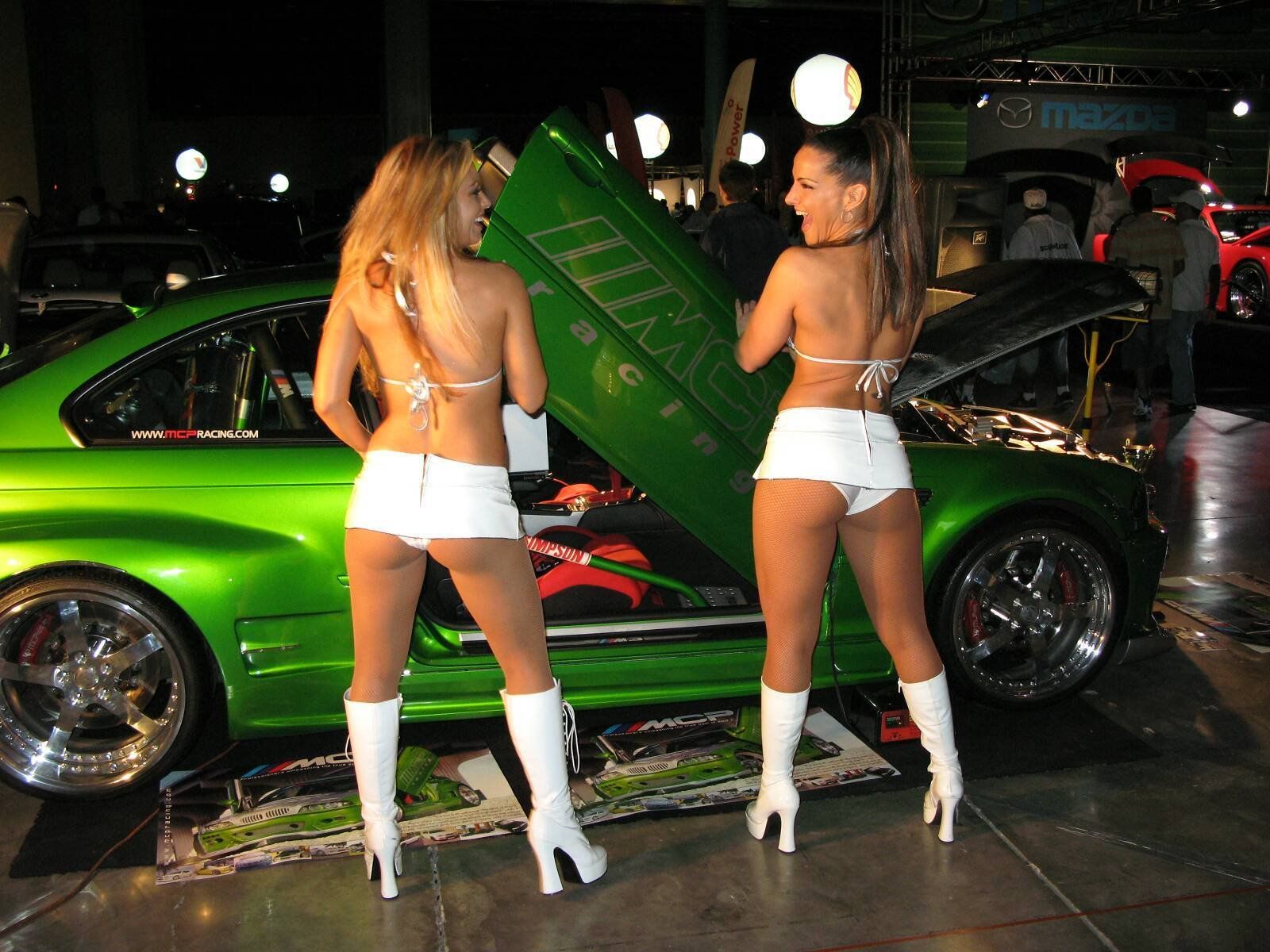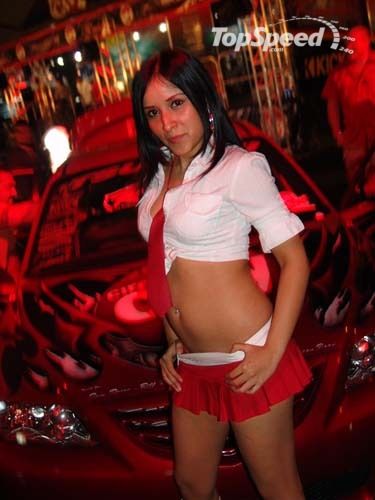|
|
|---|
Sunday, August 30, 2009
 The Series III continued production from 1973 through 1978 except for 1975 when production was temporarily halted. In total over 965 examples were produced. Production had ceased in 1975 due to financial difficulties. A take-over from a consortium in 1975 meant the company could continue producing vehicles. It was decided that instead of creating new models which often consumes large amounts of capital, the company would focus their attention and abilities on fine-tuning the products already in production. At the Birmingham International Motor Show in 1978, Aston Martin introduced the Series IV, also known as the 'Oscar India.' The hood scoop was replaced with a bulge, and a spoiler could now be found on the rear. On the interior could be found wood trim, not seen on an Aston Martin since the DB2/4 of the 1950's. Most were equipped with Chrysler's Torqueflite 3-speed automatic gearbox. Production continued from 1978 through 1985 with a total of 291 examples being produced. 1978 also saw the introduction of the V8 Volante which was a convertible. Though the United States had strict rules concerning safety and convertibles, many of the 650 Volantes produced during the 12 year period made their way State-side. In 1985 a partnership was formed with the famous Italian coachbuilder Zagato to build a limited edition Zagato bodied version of the V8 Vantage. Sketches were shown to the public at the 1985 Geneva Motorshow with the production version making an appearance a year later. These cars were lighter and smaller with an estimated top speed of around 300 km/h. Though production was limited to only 50 examples, demand was much higher. Even before the cars were produced, the money had already been collected from buyers and the original sticker price had even seen escalation due to the popularity. Planning always takes a back seat to reality. The car was estimated to have a top speed of 300 km/h but when testing began, the engine proved inadequate to meet the goal. The fuel injection system was replaced with Weber carburetors but this caused a new problem. The hood needed to be enlarged to house the cabs resulting in a design that was not aesthetically pleasing to many customers. The 'double bubble' roof was Zagato's signature trademark. The aerodynamic body was shorter than its counterpart and weighed 10% less. Handling was considerable better as was the overall performance. Since the Aston Martin V8 Vantage Zagato was produced in limited numbers many investors purchased the vehicles in hopes of turning a profit. Though the designs are very elegant, the true strength of the car was in its performance; sadly many have not been given the opportunity to prove their potential to their owners. At the 1986 New York Auto Show, Aston Martin introduced their fuel-injected Series V. Since there were no bulky carburetors, there was no need for the bulge. Production continued until 1989 with around 61 examples being produced. In 1998 a limited edition version of the Vantage was introduced and dubbed the V600. Outfitted with the 5.3 liter V8 and fitted with dual superchargers, the car was capable of producing an astonishing 600 horsepower. Some of the design cues were taken from the DBR1 LeMans racer that won the 1959 LeMans race. Production was low due to problems with emission regulations. Instead, Aston Martin introduced the V12 Vanquish in 2001. During the production of the Aston Martin V8, it was hailed by many as Britain's 'super car'. It's eight-cylinder engine was a bold move for the small, low production quantity Aston Martin firm. In the end, it was the right decision and one that carried the company for many years. Its performance was legendary and the design was elegant.
The Series III continued production from 1973 through 1978 except for 1975 when production was temporarily halted. In total over 965 examples were produced. Production had ceased in 1975 due to financial difficulties. A take-over from a consortium in 1975 meant the company could continue producing vehicles. It was decided that instead of creating new models which often consumes large amounts of capital, the company would focus their attention and abilities on fine-tuning the products already in production. At the Birmingham International Motor Show in 1978, Aston Martin introduced the Series IV, also known as the 'Oscar India.' The hood scoop was replaced with a bulge, and a spoiler could now be found on the rear. On the interior could be found wood trim, not seen on an Aston Martin since the DB2/4 of the 1950's. Most were equipped with Chrysler's Torqueflite 3-speed automatic gearbox. Production continued from 1978 through 1985 with a total of 291 examples being produced. 1978 also saw the introduction of the V8 Volante which was a convertible. Though the United States had strict rules concerning safety and convertibles, many of the 650 Volantes produced during the 12 year period made their way State-side. In 1985 a partnership was formed with the famous Italian coachbuilder Zagato to build a limited edition Zagato bodied version of the V8 Vantage. Sketches were shown to the public at the 1985 Geneva Motorshow with the production version making an appearance a year later. These cars were lighter and smaller with an estimated top speed of around 300 km/h. Though production was limited to only 50 examples, demand was much higher. Even before the cars were produced, the money had already been collected from buyers and the original sticker price had even seen escalation due to the popularity. Planning always takes a back seat to reality. The car was estimated to have a top speed of 300 km/h but when testing began, the engine proved inadequate to meet the goal. The fuel injection system was replaced with Weber carburetors but this caused a new problem. The hood needed to be enlarged to house the cabs resulting in a design that was not aesthetically pleasing to many customers. The 'double bubble' roof was Zagato's signature trademark. The aerodynamic body was shorter than its counterpart and weighed 10% less. Handling was considerable better as was the overall performance. Since the Aston Martin V8 Vantage Zagato was produced in limited numbers many investors purchased the vehicles in hopes of turning a profit. Though the designs are very elegant, the true strength of the car was in its performance; sadly many have not been given the opportunity to prove their potential to their owners. At the 1986 New York Auto Show, Aston Martin introduced their fuel-injected Series V. Since there were no bulky carburetors, there was no need for the bulge. Production continued until 1989 with around 61 examples being produced. In 1998 a limited edition version of the Vantage was introduced and dubbed the V600. Outfitted with the 5.3 liter V8 and fitted with dual superchargers, the car was capable of producing an astonishing 600 horsepower. Some of the design cues were taken from the DBR1 LeMans racer that won the 1959 LeMans race. Production was low due to problems with emission regulations. Instead, Aston Martin introduced the V12 Vanquish in 2001. During the production of the Aston Martin V8, it was hailed by many as Britain's 'super car'. It's eight-cylinder engine was a bold move for the small, low production quantity Aston Martin firm. In the end, it was the right decision and one that carried the company for many years. Its performance was legendary and the design was elegant.
Labels: Aston Martin, auto, Auto show, Car Prices, convertible, edition, engine, motor, motor show, Need for speed, roadster, Series, speed, super, vantage, Vechicles, zagato
















